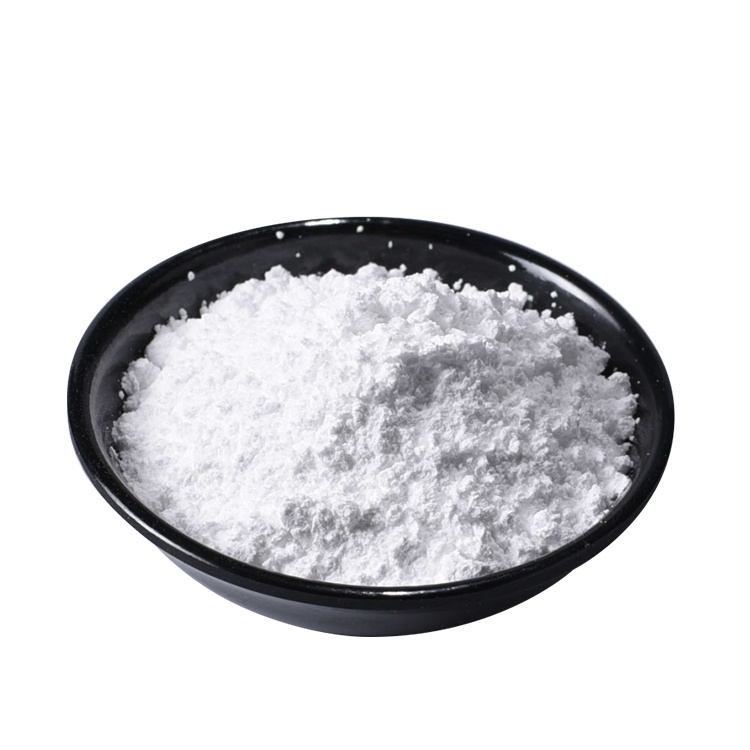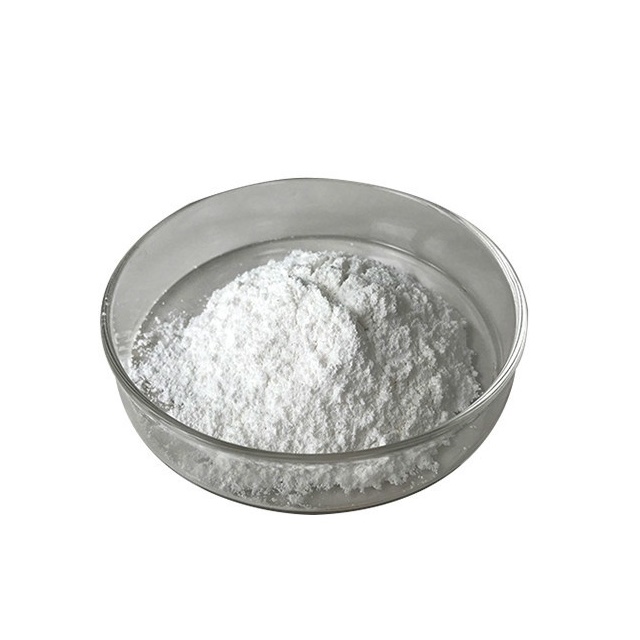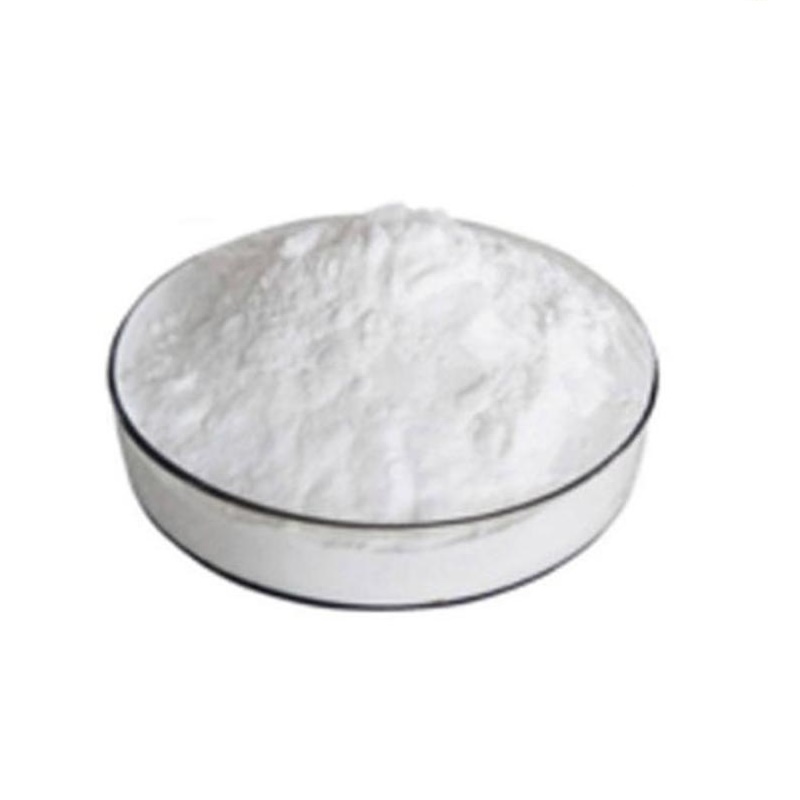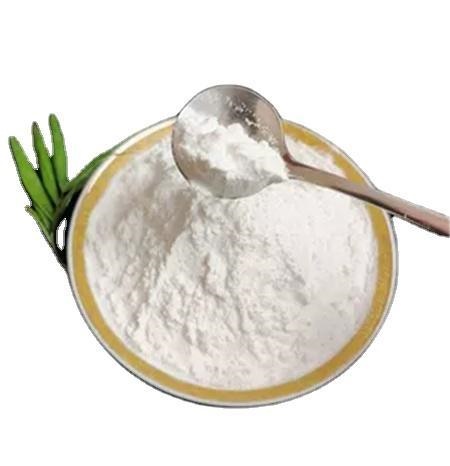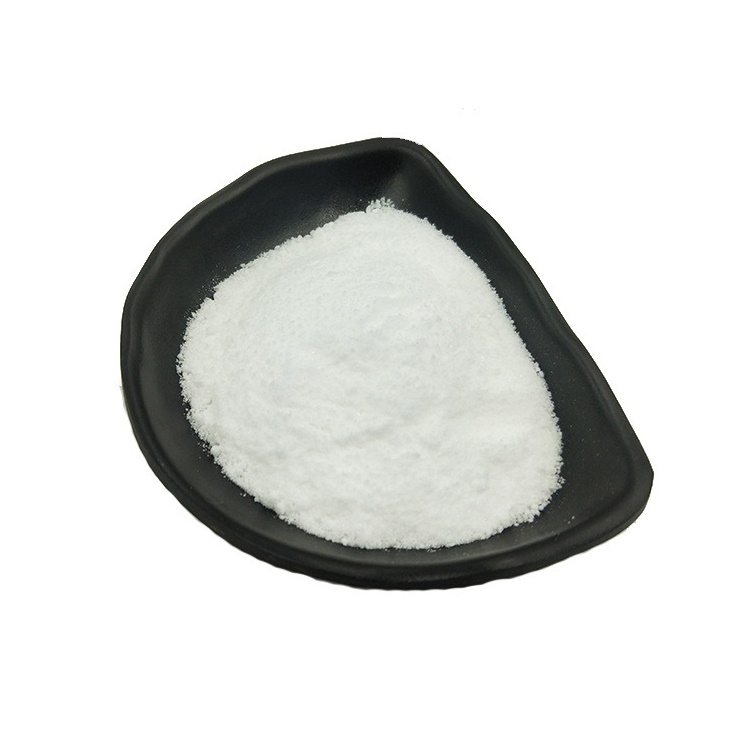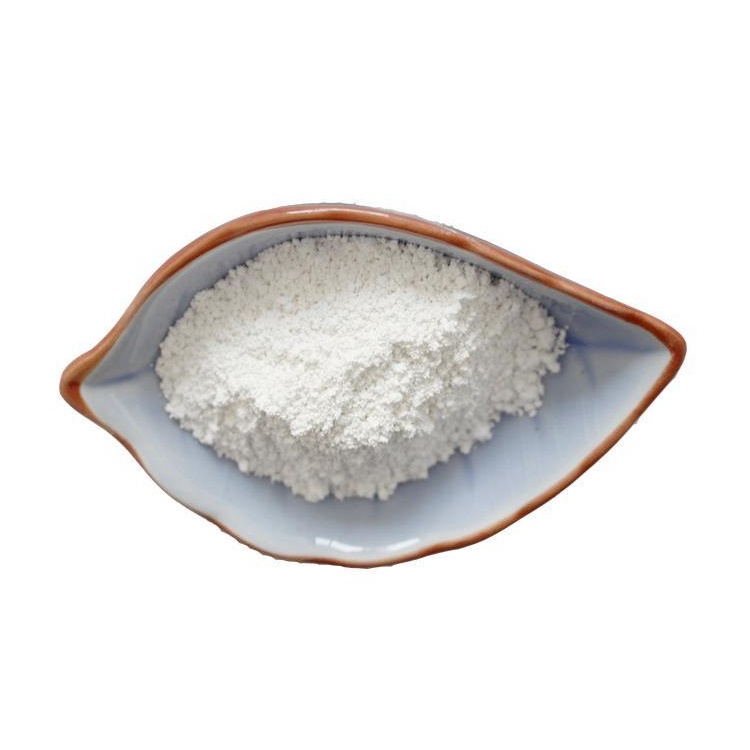

Betaine CAS 107-43-7
——————
CAS number : 107-43-7
molecular formula : C5H11NO2
EINECS : 203-490-6
——————
Email : info@deshangchem.com
Mobile : +86-13153039501
TEL : +86-531-88752665
CAS number:107-43-7
molecular formula:C5H11NO2
molecular weight:117.15
EINECS number:203-490-6
English synonyms
N-TRIMETHYLGLYCINE HYDROXIDE;OXYNEURINE;TRIMETHYLGLYCINE;TRIMETHYLGLYCOCOLL;(CARBOXYMETHYL)TRIMETHYLAMMONIUM HYDROXIDE ANHYDRIDE;(CARBOXYMETHYL)TRIMETHYLAMMONIUM HYDROXIDE INNER SALT;BET;BETAINE
Related categories
Zwitterionic surfactants; Chinese medicine reference substances; standard substances; reference substances, standard substances; analytical standards; pharmaceutical raw materials; enzymes and coenzymes; organic acids; plant extracts; reference substances; food additives; plant hormones and nucleic acids; intermediates Intermediates-Organic Synthesis Intermediates;Nutrition Enhancers;Analytical Reagent Standards;Standard Extracts;Intermediates;Biochemical Reagents-Plant Hormones and Nucleic Acids;Chemical Products-Organic Chemicals;Vitamins;Organic Chemical Raw Materials;Material Intermediates and Auxiliaries Ammonium Polyhalides, etc. (Quaternary);Quaternary Ammonium Compounds;BiochemicalsMolecular Biology;PCR OptimizationMolecular Biology;Molecular Biology;Vitamin Ingredients;Feed Additives;Food Attractants and Flavoring Agents;fine chemicals, specialty chemicals, intermediates, electronic chemical, organic synthesis, feed additive; food and beverage standard products; feed additive raw materials; industrial raw materials; chemical intermediates; synthetic intermediates; food attractants; biochemical reagents; standard products - traditional Chinese medicine standard products; raw materials ;Agricultural and veterinary raw materials;Standard products-Chinese medicine standard products;Humidifiers;Additives;Chemical raw materials;Fine chemical raw materials;Nutrition fortifiers;Additive 1;Daily chemicals;Other chemicals;API raw materials;Chemical reagents;Industrialization; Organic Raw Materials;Molecular Biology Reagents;PCR Reaction Components;PCR/Amplification;chemical reagent;pharmaceutical intermediate;phytochemical;reference standards from Chinese medicinal herbs (TCM).;standardized herbal extract;feed additives;pharm intermediate;107-43-7
Introduction
Betaine, also known as trimethylamine betaine, betaine, trimethylammonium betaine, is a quaternary ammonium derivative of glycine, and is a type of nitrogen methyl compound or trimethyl formed after the hydrogen on the amino acid amino group is replaced by a methyl group. Inner salt. Common are glycyl betaine, beta-alanyl betaine and prolyl betaine. Prismatic crystals or leaf-like crystals are obtained from ethanol, with sweet taste and easy deliquescence. Melting point is 293℃, decomposes at 300℃, soluble in water, methanol and ethanol, insoluble in ether, can be isomerized to methyl dimethylaminoacetate at melting point, from free acid HO—N(CH3)3—CH2COOH The crystal of its monohydrate is obtained in aqueous solution, it loses water at 100 ℃ to form betaine, which is stable in acid. With concentrated potassium hydroxide aqueous solution to obtain trimethylamine. Maillard reaction with sugar (browning reaction). It exists in plants such as beetroot and cottonseed, and is also contained in animal substances such as thorny shark meat and crab juice. It can be recovered from beet sugar mother liquor. It can also be obtained by methylation of aminoacetic acid or by the action of chloroacetic acid and trimethylamine. It is used clinically with N-amidinoglycine to treat myasthenia gravis, and is also used as a reagent for identifying gold in analytical chemistry. This product is betaine-type amphoteric surfactant, used as leveling agent for vat dyeing. Under drought or salt stress, many plants accumulate betaine, which becomes the main organic solute for osmotic regulation and has protective effects on proteins and cell membranes.
Chemical properties
| Melting point | 310 °C (dec.) |
| Boiling point | 218.95°C (rough estimate) |
| Density | 1.00 g/mL at 20 °C |
| Vapor Pressure | 0.05Pa at 25℃ |
| Refractive index | 1.4206 (estimate) |
FEMA | 4223 | BETAINE |
| Storage conditions | 2-8°C |
| Solubility | methanol: 0.1 g/mL, clear |
| Shape | Crystals or Crystalline Powder |
| Acidity coefficient(pKa) | 1.83(at 0℃) |
| Color | colorless |
| Water solubility | 160 g/100 mL |
| Sensitive | Hygroscopic |
Merck | 14,1179 |
BRN | 3537113 |
| Stability | Stable. Hygroscopic. Incompatible with strong oxidizing agents. |
InChIKey | KWIUHFFTVRNATP-UHFFFAOYSA-N |
LogP | -3.1 at 20℃ |
| CAS database | 107-43-7(CAS DataBase Reference) |
Colorless crystal or white crystalline powder, odorless and sweet. Melting point 293 ° C (decomposition). Easy to deliquescence, 1g of this product can be dissolved in 0.63g of water, 1.8g of methanol, 11.5g of ethanol, and slightly soluble in ether. Trimethylamine will be decomposed in concentrated alkali. Oral LD5011.2g/kg for male rats and 11.15g/kg for female rats.
Use
● The addition of betaine to the feed can protect the vitamins in the feed. The feed can withstand high temperature and has a long storage period, which can greatly improve the utilization rate of the feed and reduce the cost. Adding 0.05% betaine to chicken feed can replace 0.1% methionine; adding betaine to bait has an attracting effect on fish and shrimp, and can be used in large quantities as a peng agent for aquatic products; adding betaine to pig feed, pigs love to eat , and increased lean meat percentage. 1kg of betaine is equivalent to 3.5kg of methionine. The ability of betaine to provide methyl group is 1.2 times that of choline chloride and 3.8 times that of methionine, and the feeding effect is very significant.
● It is a betaine-type amphoteric surfactant, used as a leveling agent for vat dyeing.
● Feed-grade betaine anhydrous can be used as a feed additive. It is a natural high-efficiency methyl donor, which can partially replace methionine and choline chloride, reduce feed costs, reduce pig backfat, and improve lean meat rate and carcass quality.
● Blood lipid lowering, anti-fatty liver; anti-aging
● Used as a feed additive to promote animal growth and improve disease resistance
Production method
● Recovered from beet sugar mother liquor, it can also be produced by synthetic method.
● extraction method. The mother liquor of sugar beet sugar contains 12%-15% betaine, which can be directly recovered. 300 parts of mother liquor were heated to 50° C., 80 parts of calcium chloride were added, stirred for a certain period of time, and filtered while hot. The filtrate is acidified with hydrochloric acid and then cooled to 20-30 DEG C for crystallization, separated and dried to obtain about 30 parts of betaine.
● synthetic method. It is derived from the quaternization of chloroacetic acid and trimethylamine,
Use 16% sodium hydroxide solution to neutralize 195 parts of 48.6% chloroacetic acid aqueous solution into sodium chloroacetate solution, then mix with 360 parts of 16.4% trimethylamine solution, ventilate for 1 hour at 50 °C, and ventilate again at 80 °C 1h. After dilution, the reactant was adsorbed by ion resin (Dowex-50-8) and eluted with ammonia water to obtain betaine solution. The finished product is obtained by vacuum concentration and crystallization.
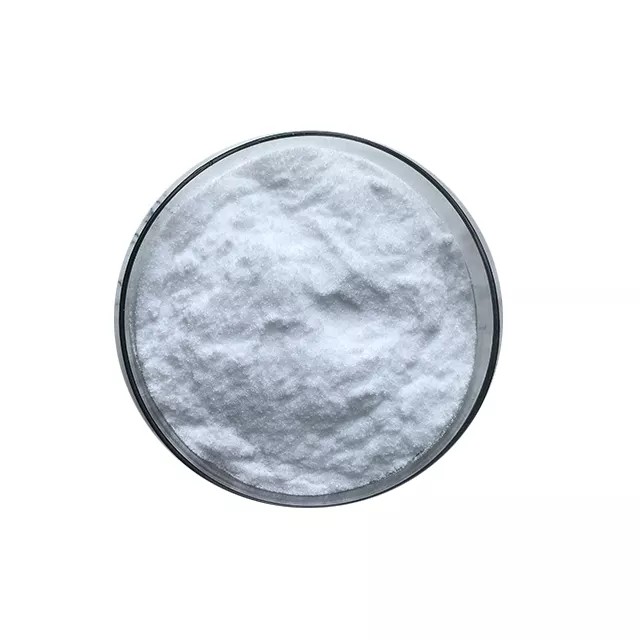
Betaine CAS 107-43-7
CAS number:107-43-7
molecular formula:C5H11NO2
molecular weight:117.15
EINECS number:203-490-6
English synonyms
N-TRIMETHYLGLYCINE HYDROXIDE;OXYNEURINE;TRIMETHYLGLYCINE;TRIMETHYLGLYCOCOLL;(CARBOXYMETHYL)TRIMETHYLAMMONIUM HYDROXIDE ANHYDRIDE;(CARBOXYMETHYL)TRIMETHYLAMMONIUM HYDROXIDE INNER SALT;BET;BETAINE
Related categories
Zwitterionic surfactants; Chinese medicine reference substances; standard substances; reference substances, standard substances; analytical standards; pharmaceutical raw materials; enzymes and coenzymes; organic acids; plant extracts; reference substances; food additives; plant hormones and nucleic acids; intermediates Intermediates-Organic Synthesis Intermediates;Nutrition Enhancers;Analytical Reagent Standards;Standard Extracts;Intermediates;Biochemical Reagents-Plant Hormones and Nucleic Acids;Chemical Products-Organic Chemicals;Vitamins;Organic Chemical Raw Materials;Material Intermediates and Auxiliaries Ammonium Polyhalides, etc. (Quaternary);Quaternary Ammonium Compounds;BiochemicalsMolecular Biology;PCR OptimizationMolecular Biology;Molecular Biology;Vitamin Ingredients;Feed Additives;Food Attractants and Flavoring Agents;fine chemicals, specialty chemicals, intermediates, electronic chemical, organic synthesis, feed additive; food and beverage standard products; feed additive raw materials; industrial raw materials; chemical intermediates; synthetic intermediates; food attractants; biochemical reagents; standard products - traditional Chinese medicine standard products; raw materials ;Agricultural and veterinary raw materials;Standard products-Chinese medicine standard products;Humidifiers;Additives;Chemical raw materials;Fine chemical raw materials;Nutrition fortifiers;Additive 1;Daily chemicals;Other chemicals;API raw materials;Chemical reagents;Industrialization; Organic Raw Materials;Molecular Biology Reagents;PCR Reaction Components;PCR/Amplification;chemical reagent;pharmaceutical intermediate;phytochemical;reference standards from Chinese medicinal herbs (TCM).;standardized herbal extract;feed additives;pharm intermediate;107-43-7
Introduction
Betaine, also known as trimethylamine betaine, betaine, trimethylammonium betaine, is a quaternary ammonium derivative of glycine, and is a type of nitrogen methyl compound or trimethyl formed after the hydrogen on the amino acid amino group is replaced by a methyl group. Inner salt. Common are glycyl betaine, beta-alanyl betaine and prolyl betaine. Prismatic crystals or leaf-like crystals are obtained from ethanol, with sweet taste and easy deliquescence. Melting point is 293℃, decomposes at 300℃, soluble in water, methanol and ethanol, insoluble in ether, can be isomerized to methyl dimethylaminoacetate at melting point, from free acid HO—N(CH3)3—CH2COOH The crystal of its monohydrate is obtained in aqueous solution, it loses water at 100 ℃ to form betaine, which is stable in acid. With concentrated potassium hydroxide aqueous solution to obtain trimethylamine. Maillard reaction with sugar (browning reaction). It exists in plants such as beetroot and cottonseed, and is also contained in animal substances such as thorny shark meat and crab juice. It can be recovered from beet sugar mother liquor. It can also be obtained by methylation of aminoacetic acid or by the action of chloroacetic acid and trimethylamine. It is used clinically with N-amidinoglycine to treat myasthenia gravis, and is also used as a reagent for identifying gold in analytical chemistry. This product is betaine-type amphoteric surfactant, used as leveling agent for vat dyeing. Under drought or salt stress, many plants accumulate betaine, which becomes the main organic solute for osmotic regulation and has protective effects on proteins and cell membranes.
Chemical properties
| Melting point | 310 °C (dec.) |
| Boiling point | 218.95°C (rough estimate) |
| Density | 1.00 g/mL at 20 °C |
| Vapor Pressure | 0.05Pa at 25℃ |
| Refractive index | 1.4206 (estimate) |
FEMA | 4223 | BETAINE |
| Storage conditions | 2-8°C |
| Solubility | methanol: 0.1 g/mL, clear |
| Shape | Crystals or Crystalline Powder |
| Acidity coefficient(pKa) | 1.83(at 0℃) |
| Color | colorless |
| Water solubility | 160 g/100 mL |
| Sensitive | Hygroscopic |
Merck | 14,1179 |
BRN | 3537113 |
| Stability | Stable. Hygroscopic. Incompatible with strong oxidizing agents. |
InChIKey | KWIUHFFTVRNATP-UHFFFAOYSA-N |
LogP | -3.1 at 20℃ |
| CAS database | 107-43-7(CAS DataBase Reference) |
Colorless crystal or white crystalline powder, odorless and sweet. Melting point 293 ° C (decomposition). Easy to deliquescence, 1g of this product can be dissolved in 0.63g of water, 1.8g of methanol, 11.5g of ethanol, and slightly soluble in ether. Trimethylamine will be decomposed in concentrated alkali. Oral LD5011.2g/kg for male rats and 11.15g/kg for female rats.
Use
● The addition of betaine to the feed can protect the vitamins in the feed. The feed can withstand high temperature and has a long storage period, which can greatly improve the utilization rate of the feed and reduce the cost. Adding 0.05% betaine to chicken feed can replace 0.1% methionine; adding betaine to bait has an attracting effect on fish and shrimp, and can be used in large quantities as a peng agent for aquatic products; adding betaine to pig feed, pigs love to eat , and increased lean meat percentage. 1kg of betaine is equivalent to 3.5kg of methionine. The ability of betaine to provide methyl group is 1.2 times that of choline chloride and 3.8 times that of methionine, and the feeding effect is very significant.
● It is a betaine-type amphoteric surfactant, used as a leveling agent for vat dyeing.
● Feed-grade betaine anhydrous can be used as a feed additive. It is a natural high-efficiency methyl donor, which can partially replace methionine and choline chloride, reduce feed costs, reduce pig backfat, and improve lean meat rate and carcass quality.
● Blood lipid lowering, anti-fatty liver; anti-aging
● Used as a feed additive to promote animal growth and improve disease resistance
Production method
● Recovered from beet sugar mother liquor, it can also be produced by synthetic method.
● extraction method. The mother liquor of sugar beet sugar contains 12%-15% betaine, which can be directly recovered. 300 parts of mother liquor were heated to 50° C., 80 parts of calcium chloride were added, stirred for a certain period of time, and filtered while hot. The filtrate is acidified with hydrochloric acid and then cooled to 20-30 DEG C for crystallization, separated and dried to obtain about 30 parts of betaine.
● synthetic method. It is derived from the quaternization of chloroacetic acid and trimethylamine,
Use 16% sodium hydroxide solution to neutralize 195 parts of 48.6% chloroacetic acid aqueous solution into sodium chloroacetate solution, then mix with 360 parts of 16.4% trimethylamine solution, ventilate for 1 hour at 50 °C, and ventilate again at 80 °C 1h. After dilution, the reactant was adsorbed by ion resin (Dowex-50-8) and eluted with ammonia water to obtain betaine solution. The finished product is obtained by vacuum concentration and crystallization.
Team Presentation

